



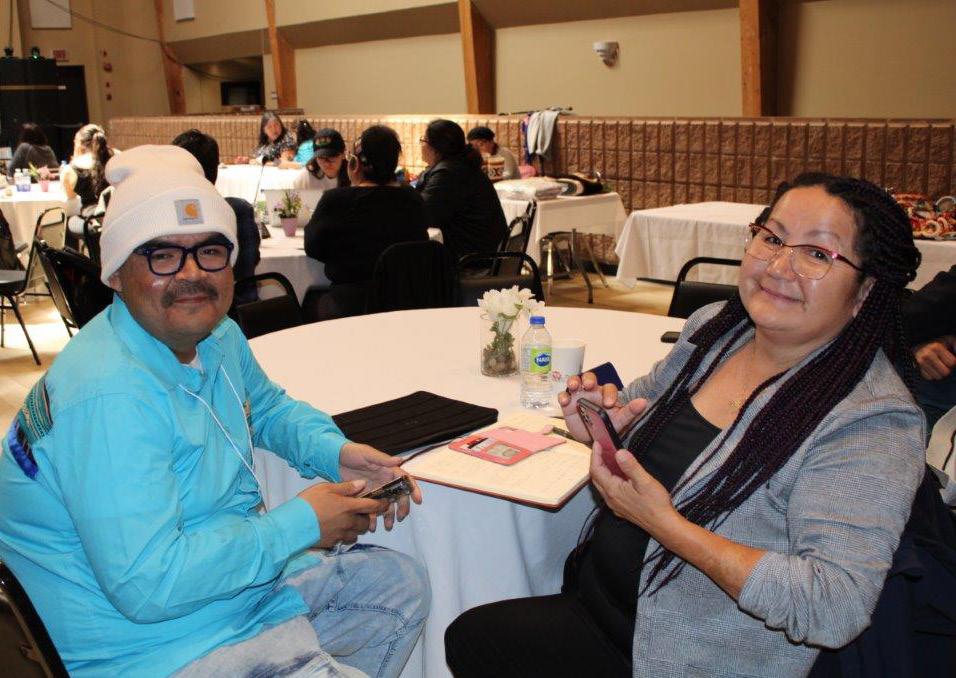






















When wildfires in Alberta and Nova Scotia forced the evacuation of thousands a few weeks ago, many in Quebec were counting their lucky stars a little early during what seemed then as a late and chilly spring. Then, perhaps predictably, the consequences of climate change caught up with us, too.
And nowhere is global warming as severe as in the North. Forest fires are a natural and necessary phenomenon, but they are occurring with greater frequency, over wider areas, earlier and earlier each spring. And all that smoke blanketing cities from Montreal to New York will only contribute to faster warming of the planet.
A report by an international team of scientists last fall noted that soil moisture last year in Northern regions was drastically lower than normal. Combined with continuing drought and high spring temperatures in the North this spring, it was almost inevitable that the tinder-dry forests would erupt into the record-setting infernos we’ve seen this year.
On a personal level, the evacuations of vulnerable people from our communities induces great hardships. Only a couple weeks ago I helped my mother move from an assisted-living complex in Ottawa to an Elders’ home in Chibougamau, much closer to our community of Mistissini. Only for her to be uprooted yet again by the wildfires.
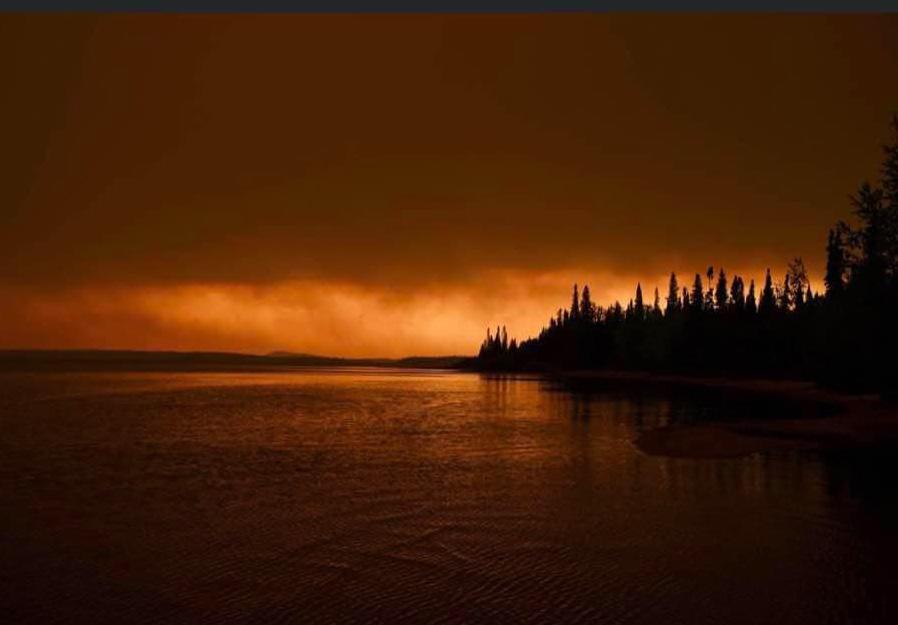
My mom has limited mobility because of Parkinson’s disease and gets around in a wheelchair. When Chibougamau was evacuated June 8, her home’s residents were informed at 10 pm that they would be leaving for Roberval. A special medical
bus would take her and other residents with limited mobility to safety. They were allowed one bag each and their wheelchairs.
Even though the medical bus had the same priority as an ambulance the overnight trip took over eight hours. Mom said that they passed many vehicles but fortunately saw no fires or smoke on the journey. However, that trip was taxing on the passengers as they couldn’t use a washroom or rest easy in the bus.
Others making the same forced journey had a much longer time on the road due to two construction sites that reduced the highway to one lane with unnecessary traffic lights to allow non-existent travellers heading north to pass. This led to about a 100-kilometre traffic jam, according to an Ouje-Bougoumou resident. Later the problem was taken care of, and traffic started moving again.
Despite all the problems, we must acknowledge the courage and determination by firefighters, local leaders, health boards, education organizations and simply people in doing what people should do in the face of a disaster. As we saw during the pandemic, the Cree Nation knows how to come together and support each other in the face of emergencies.
But there is little that our small population of Cree people can do in the face of climate changes caused by decades and decades of global carbon emissions – even though we as a Northern people face more drastic consequences. We do need to document that change in the climate and help each other adapt as best we can. We should stop blaming each other and start coming together to reduce the impacts of this new reality on our future generations.
Valade, Donna Malthouse THANKS TO: Air Creebec
CONTACT US: The Nation News, 918-4200 St. Laurent, Montreal, QC., H2W 2R2




SUBSCRIPTIONS: $60 plus taxes, US: $90, Abroad: $110, Payable to beesum communications, all rights reserved, publication mail #40015005, issn #1206-2642
Nation is a member of: The James Bay Cree Communications Society, Circle Of Aboriginal Controlled Publishers, Magazines Canada Quebec Community Newspaper Assn. Canadian Newspapers Assn. Les Hebdos Sélect Du Québec. Funded [in part] by the Government of Canada. | www.nationnews.ca | facebook.com/NATIONnewsmagazine | Twitter: @creenation_news
weeks by Beesum Communications EDITORIAL BOARD L. Stewart, W. Nicholls, M. Siberok, Mr. N. Diamond, E. Webb EDITOR IN CHIEF Will Nicholls DIRECTOR OF FINANCES Linda Ludwick EDITORS Lyle Stewart, Martin Siberok PRODUCTION COORDINATOR AND MANAGING EDITOR Randy Mayer CONTRIBUTING WRITERS S. Orr, M. Labrecque-Saganash, P. Quinn, B. Powless, S. Hossain DESIGN Emma Lindsay & Matthew Dessner SALES AND ADVERTISING Danielle
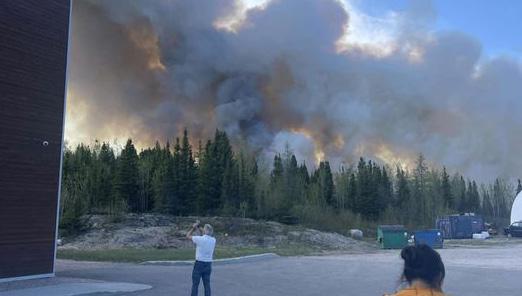 by Patrick Quinn
Local Journalism Initiative Reporter
by Patrick Quinn
Local Journalism Initiative Reporter
As forest fires ravaged large areas of southern Eeyou Istchee in early June, Ouje-Bougoumou was completely evacuated and Waswanipi was relocating its most vulnerable people. As of June 8, 137 fires were active across the province, most out of control, down from 149 the previous day as cooler weather and firefighting reinforcements began taming some of the blazes.
After fires breached a preventative barrier and was just 17 km away, OujeBougoumou and Chibougamau residents were ordered to evacuate June 6. Buses transported people 400 km southeast to the Cégep de Chicoutimi, while vehicles lined the only highway towards Lac SaintJean. Some headed instead to Mistissini.
Forest fire protection organization SOPFEU was using aerial tankers to fight the fire, which was moving west of the community. He said forecasts that winds were expected to shift to come from the south would be helpful to their efforts.
“SOPFEU’s plan is to burn some of the forest so there will be no fuel for the fire when the wind direction changes,” said Ouje-Bougoumou Chief Curtis Bosum June 8. “These efforts, combined with the impact of the swampy area on the fire and our protective barrier on the east side of the community may all prove to be effective.”
The barrier perimeter on the east side of the community was 40 metres wide. Residents were advised not to return home as the heavy smoke caused by the water bombers is very hazardous to health. Local police force Lieutenant Robert Mianscum said EEPF officers had evacuated remaining people and set up roadblocks and patrols to ensure safety.
On June 7, Waswanipi began relocating vulnerable people to Quebec City’s ExpoCité convention centre in a “pre-evacuation” phase, including those with chronic illness, infants and pregnant women. Chief Irene Neeposh advised res-
idents to prepare an evacuation bag, keep their cars gassed up and plan their route to safety.
Nearly 300 Waswanipi residents had been evacuated as of June 8. Other evacuations were happening in several communities, including Lebel-sur-Quévillon, Normetal and parts of Val-d’Or. Many across the province were voluntarily leaving their homes because of heavy smoke in the air.
Mistissini Chief Michael Petawabano reassured residents that their community was safe but recommended only using essential power as the primary line into the community was damaged in the fire. Electricity in the community was going on and off throughout June 7.
“Conserve your gas, walk when it’s not smoky,” urged Petawabano. “We are asking people not to consume alcohol, consider the essential workers. Essential services, food and gas are available. They will not be blocked from entering the community.”
The Cree Nation Government had earlier issued a travel advisory warning, recommending travel to bush camps be avoided as the shifting winds could quickly change the status of a fire. It advised people to be alert to local communications and follow instructions provided by public safety services.
“I was worried about my grandmother because she was in the bush and there was a lot of smoke,” Raven Icebound Lord told the Nation. As her mother had already evacuated with a full carload, Icebound
Lord called her uncle to check on her, who travelled from Mistissini to pick her up in Waswanipi on the way to Lac Saint-Jean.
The unprecedented extent of wildfires across Quebec had consumed over 638,000 hectares as of June 8 with winds carrying hazardous smoke to Montreal and cities throughout the northeastern United States. After suffering its worst air-quality readings on record, New York City provided a million free masks to residents.
“We recommend for people going outdoors to wear an N-95 mask like we had for Covid,” said Dr. Catherine Dickson, a public health physician with the Cree Health Board. “These are designed to filter particles from the smoke out. We’re looking to identify public buildings for setting up clean air shelters.”
Dickson explained that particles from the smoke can get into the lungs, especially for people with other health conditions, making your heart work faster to keep the oxygen exchanging in the body. The stress caused by the uncertainty was also a concern for mental health.
While rainy conditions began reducing the state of emergency in eastern Quebec on June 7, northern Quebec remained dry with no rain forecast until June 12. As firefighting resources arrived from as far away as Portugal, Mexico and Spain, officials said no other evacuations are planned in the short term and it’s too soon to say when people may return home.

Indigenous Pre-Health Sciences
Indigenous Preparatory Studies

Indigenous Wellness and Addictions Prevention
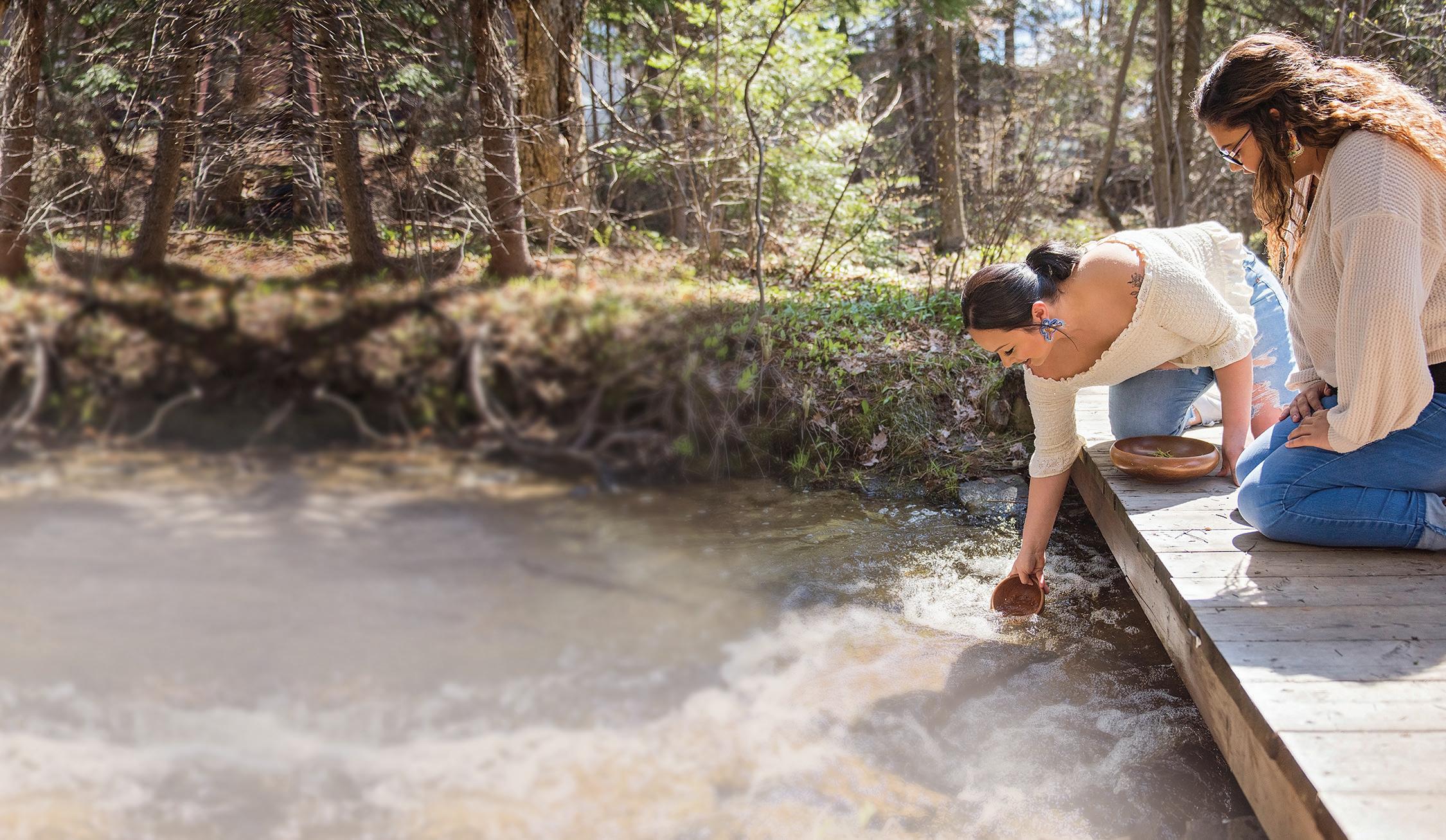
Indigenous students make up of Canadore’s Student Population.
Our students like it here! We have one of the HIGHEST Indigenous student retention rates in Canada.

Responding to the urgent need for safe spaces for Indigenous women, children and 2SLGBTQI+ individuals escaping gender-based violence, the federal government is committing $103 million in funding for the construction and support of 178 new shelter spaces and transitional houses across 21 communities.
Indigenous-led committees will evaluate applications and select projects for this part of Ottawa’s Violence Prevention
Strategy in collaboration with the Canada Mortgage and Housing Corporation (CMHC) and Indigenous Services Canada (ISC). The selection process should ensure shelters and transitional homes are culturally appropriate.
CMHC allocated $81 million toward construction costs, while ISC committed $15 million for operational support and $7.8 million for start-up expenses. The aim is to create stable and safe housing solutions for survivors during their journeys to recovery and targets regions most in need of resources.
Statistics produced by the National Inquiry into Missing and Murdered Indigenous Women and Girls show that Indigenous women were almost six times more likely to face a violent death than non-Indigenous women in 2014. The new funding responds to some of the inquiry’s calls for action.
Senator Michèle Audette, a prominent advocate for Indigenous women’s rights, noted that the funding is not a sin-
gular solution. “It’s not just a few places that we will say and mark, ‘Check, we’re okay now,’” she said. “For me, it is an ongoing call for justice.”
Crown-Indigenous Relations Minister Marc Miller said the investment will make a difference. “This is going to be a game-changer. It is going to save lives,” he said.
This sentiment was echoed by Patty Hajdu, Minister of Indigenous Services, who acknowledged that more work remains. “I know that there’s way more that we need to do with housing,” she remarked. “But this is a very important piece.”
The establishment of bilateral agreements with provinces and territories, facilitated by Women and Gender Equality Canada, further underscores the commitment to a comprehensive and coordinated approach to ending gender-based violence.
First Nations Drinking Water SET TLEMENT
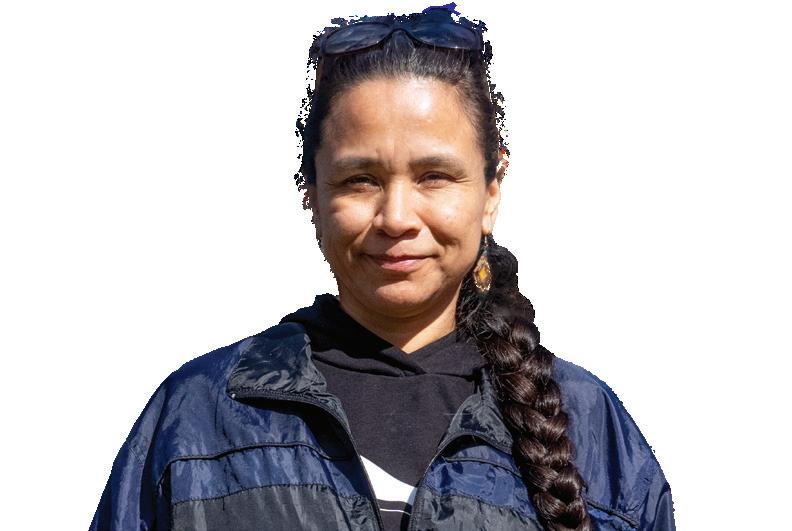
The Claims Period has been extended to March 7, 2024
If you are a First Nations member impacted by a long-term drinking water advisory, you now have more time to submit a claim for compensation.

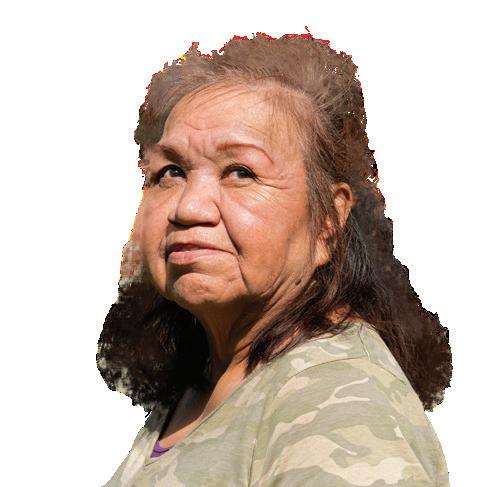

FirstNationsDrinkingWater.ca
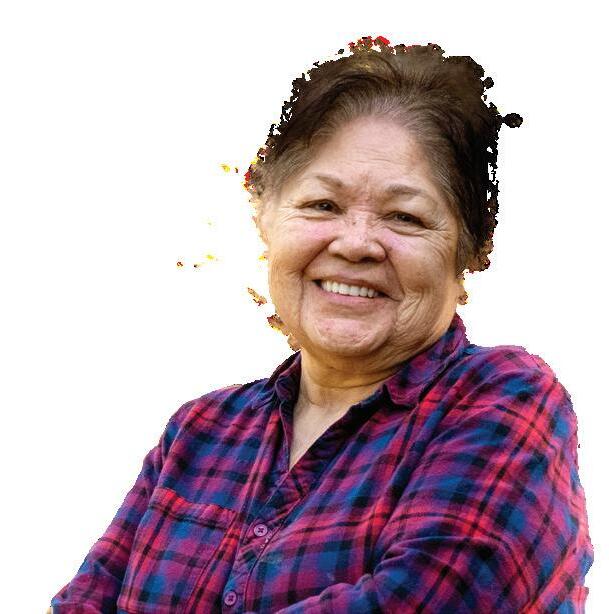


HAPPY NATIONAL INDIGENOUS PEOPLES DAY!
May you keep celebrating a life of harmony with all that surrounds you.
The National Film Board of Canada (NFB) is honouring National Indigenous History Month with a wide range of online programming on nfb.ca throughout June.

As part of the programming, the NFB will premiere two feature documentaries filmed in the North: Fritz Mueller’s Voices Across the Water on June 12 and Tanya Tagaq and Chelsea McMullan’s Ever Deadly on June 16. Nfb.ca will also highlight three channels dedicated to Indigenous works, including a new channel from the Wapikoni collective, which supports franco-
phone Indigenous filmmakers in Quebec.
In addition, nfb.ca will offer a selection of films exploring 2SLGBTQI+ realities and experiences for Pride Month, as well as films shedding light on the struggles faced by refugees in honour of World Refugee Day on June 20. made by this member and show him the door.”
The Native Women’s Association of Canada said Dufour’s comments “are a slap in the face to Indigenous people across Canada, especially to survivors of abuse.”
Grand Chief Mandy GullMasty affirmed the Cree Nation’s support to Val-d’Or Mayor Céline Brindamour after the incident, calling the
comments “extremely irresponsible, divisive and confusing, given the party’s insistence that it is not the words that matter but rather the actions when it comes to systemic discrimination.” NFB celebrates National Kitcisakik
The Kitcisakik Council and the federal government have signed a framework agreement to advance self-determination and pursue a nation-tonation relationship.
The agreement, guided by the United Nations Declaration on the Rights of Indigenous
Peoples Act, facilitates discussions on land governance, self-government, economic development and cultural rights.
Chief Régis Penosway of the Kitcisakik Anicinape community highlighted the agreement’s importance in strengthening the government-to-government relationship.
Minister of CrownIndigenous Relations Marc Miller expressed gratitude and emphasized the significance of dialogue and collaboration.
The signing ceremony took place May 26 at the Mikizisec Elementary School in Kitcisakik.



 by Patrick Quinn
by Patrick Quinn
Little Bird, a new six-part dramatic series from Rezolution Pictures, premiered May 26 on Crave and APTN, bringing an Indigenous-led perspective of the Sixties Scoop to screens for the first time. The story explores one family’s search for truth after being torn apart by Canada’s notorious child removal system.

Told in parallel timelines, it contrasts the loving Little Bird family on Saskatchewan’s Long Pine Reserve in the 1960s with one of the grownup children, now named Esther Rosenblum, at her engagement party in Montreal’s Jewish community in the 1980s. Haunted by repressed memories, she travels back to the Prairies to seek the family she lost.

Co-creator Jennifer Podemski, whose mixed Jewish and Indigenous ancestry includes grandparents who survived both residential school and the Holocaust, developed the script with renowned playwright Hannah Moscovitch. With award-winning directors Elle-Máijá Tailfeathers and Karahkwenhawi Zoe Hopkins, and a powerful Indigenous cast, the series is driven by a desire for cultural authenticity.

“We’ve reached a certain maturity in telling our own stories,” said executive producer Ernest Webb. “We’re in a place where we can work with people who have the same values of getting the story out and giving it the respect that it needs.”













Webb said the production’s unique training program for emerging Indigenous creators and crew was an “enlightening and enriching experience.” Along with Podemski and numerous story advisors, Webb drew on memories of his grandparents to portray the Little Bird family’s “classic rez house.”
Podemski integrated personal experiences with input from Sixties Scoop survivor and expert Raven Sinclair. After watching the short documentary Becoming Nakuset, Podemski realized the lead character’s uncanny similarities to the executive director of the Montreal Native Women’s Shelter.
To ensure authenticity, Nakuset went through the entire script and guided shooting in Montreal’s Westmount neighbourhood. She helped actresses Darla Contois and Lisa Edelstein better understand their characters, advising the latter who plays the adoptive mother to channel the love of Nakuset’s late Bubbe (grandmother).
“I was thrilled to help but it’s still very surreal to see a dramatization of your actual experience,” Nakuset told the Nation. “I wasn’t a bad kid into drugs or alcohol but still not accepted by my family. Her mother was like my Bubbe, very loving and protective. Most of the others are critical and condescending.”
In her job, Nakuset regularly deals with injustices at youth protection. And she admitted “bawling [her] eyes out so hard” watching Little Bird’s emotional journey. She praised the series as beautifully written and filmed in its depictions of Indigenous realities, reunions with estranged siblings and the experience of feeling “you’re a fish out of water and want so badly to be accepted.”
adoptive parents like items from a catalogue.
The series immerses viewers in typical reservation life from the times, rich in love and laughter yet deemed impoverished by settler intruders. Despite the massive systemic barriers, at the core is a vibrant humanity that shines through the dark thematic material in nuanced portrayals.
“When we see [our] difficult stories from outsider perspectives, so often it’s framed with this drama porn lens,” said Tailfeathers, who directed the first three episodes. “We’re consistently trying to honour the love and joy within our community. It’s not just a story of removal but what healing can look like in one family.”
Immediately hooked by the “breathtaking” script, Tailfeathers was thrilled to work alongside Podemski and Hawkins. The production made efforts to shelter the child actors from the heaviest parts and provided a trauma-informed therapist and cultural support worker on set for the entire cast.
It’s now estimated that about 20,000 Indigenous children were removed by child welfare agents during the Sixties Scoop. Little Bird focuses on the Montreal phenomenon in which Jewish Family Services offered Indigenous children to
“Seeing these proud young children helped me get through the most difficult days, knowing they’re part of this future of reclamation and hope for our communities,” shared Tailfeathers. “The idea throughout the show is we carry our past, ancestors and homelands with us wherever we go.”

Conveying universal themes of self-discovery, identity and reinvention, the compelling drama has the power to resonate with audiences across the globe. Podemski hopes this authentic telling of “one of the most important stories never yet told on screen” will encourage viewers to reconsider their own biases and how they can better stand in solidarity with those being oppressed.
With even many of the crew previously unfamiliar with the Sixties Scoop, the show’s creators hope the broader public may be introduced to a genocide they know very little about – and that this issue continues today. Tailfeathers noted that in Manitoba, where Little Bird was shot, about 90% of children in foster care are Indigenous.
A 90-minute companion documentary directed by Erica Daniels called Coming
Home will be released alongside the final episode on June 30, exploring connections between the growing movement for Indigenous narrative sovereignty and the impact of the child welfare system through interviews with the series’ creators, cast and crew.
Inuit actor Eric Schweig, who plays the grandfather in Little Bird and may be best known for his work in 1990s blockbuster The Last of the Mohicans, was taken in the Sixties Scoop along with his six siblings. Finding his uncle living on Vancouver’s streets, he discovered his birth mother was in an Edmonton hospital, but she died before he could reach her.
Co-director Zoe Hopkins said she certainly wasn’t the only one crying behind the camera during production, sometimes during “reunions that were heartwarming
and wonderful.” Many involved with the series expressed that the experience was profound, not only due to the powerful story and performances but in reclaiming the truth of their collective history.
At the Winnipeg premiere, a Sixties Scoop survivor told Hopkins she remembered hiding from government agents under the floorboards many times –something that is depicted “just perfect” in Little Bird’s first episode.
“That was all I ever wanted in being involved in this project, that people feel seen and heard, and that people know the truth,” said Hopkins. “I’m getting messages that it’s hard to watch but it’s so important and beautifully told that people can’t wait to watch the next one. It was really impactful, something I’ll remember forever.”





Let's celebrate together the richness of Indigenous peoples! ville.chibougamau.qc.ca


On behalf of the CBHSSJB, I would like to wish my fellow community members a happy National Indigenous Peoples Day.

For us, every day is a celebration of our history, language, identity, resilience and the efforts we put into reflecting our Cree values in the way we care for our people through our mandate, programs and services.



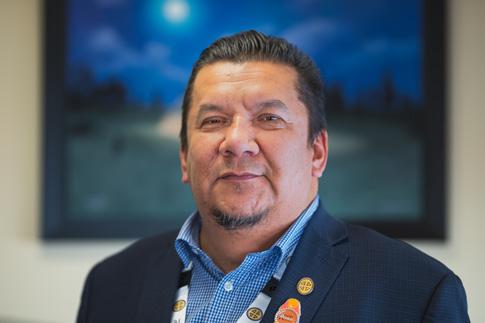

Striving to achieve Miyupimâtisîun and being healthy like our ancestors is beating the odds and colonial systems built against us. This is our effort to continue the process of decolonization. The journey to reclaim healthy communities is complex and will require continuous efforts, but every person who takes ownership of their health is a step forward for our nation.

It is our shared responsibility.
As the Chairperson of the CBHSSJB, I am honoured to represent an entity with such a noble mission and the work we do motivates me to keep on investing energy in my own healing journey.
Today, and every day of the year, may we carry ourselves with pride, dignity and health to honour our people.
 Bertie Wapachee
Bertie Wapachee




 9, rue Nottaway, C P 520, Matagami, Qc, J0Y 2A0
9, rue Nottaway, C P 520, Matagami, Qc, J0Y 2A0
 by Patrick Quinn
by Patrick Quinn
The Cree Women of Eeyou Istchee Association (CWEIA) presented the first-ever Cree Women Business Conference at the Mitchuap Building in Chisasibi on May 26-27. Themed “Mind Your Business”, the event featured a variety of information sessions, motivational speakers, business workshops and entertainment.
“I felt there was a new sense of inspiration because no one has ever done a conference specifically for our women in business,” said Julie Ann Cooper, CWEIA’s business development coordinator. “This is a start for a lot of things moving for Cree women, especially the ones thinking about having a business.”
While business leadership has previously been celebrated at CWEIA’s Women Leadership Forum, most recently held last October in Val-d’Or, creating this separate event provided an opportunity to focus on the region’s growing number of female entrepreneurs.
Awards were presented to young medical aesthetics entrepreneur Sehoneh Masty from Waswanipi, Desiree Ottereyes from Wemindji for promoting the Cree language and Chisasibi Elder Jane Matthew for her inspiring mentorship.
“We give these recognition awards to remind the women their work is valuable, and they have to be honoured for their contribution to society,” said CWEIA program coordinator Josephine Sheshamush. “They lose themselves in always being there for their families. They have full-time jobs and volunteer for the community.”
Pauline Lameboy and the àChisasibi Cree Women’s Association were credited for playing a major role in the event’s success. Catherine Wash, Christina Louttit, George Tapiatic and Teresa Bearskin managed the “professional level” catering while secondary school students handled the setup, serving and cleaning.
Although the attendance of about 50 was less than anticipated, perhaps partly because of its timing just after Goose Break, this created a more relaxed and closer-knit atmosphere.
“They were okay it wasn’t all sold out,” Cooper told the Nation. “They had a safe space to share, knowing CWEIA would be listening without any political red tape. They found it less intimidating than other business conferences – Cree women walked away feeling they’d been heard.”
Indigenous women are the fastest growing demographic in entrepreneurship across the country, with the proportion of women-owned Indigenous businesses nearly doubling between 2010 and 2019. Research suggests these tend to be smaller and less financed but more diversified than those owned by men.
While recent years have seen an unprecedented rise of Cree women in important community and organizational leadership roles, empowering businesswomen is seen as a key factor in the Cree Nation’s capacity building. Through coaching and training, the conference intended to provide women the tools they need to get their businesses off the ground.
Workshops showed participants how to access funding and establish company visions – the most popular provided guidance for making a business plan. Several local entrepreneurs shared advice from their experience in different types of businesses. Rita Rabbitskin of Cree Print Customs told her inspiring story while Roger Orr from Retro Daze Café gave a well-received presentation.
Jossée Bernier was the youngest presenter, impressing attendees with tips for making wellness activities an integral part of daily life. Sherri-Ann Lucas shared her humble beginnings learning how to bead during the Covid lockdown, which quickly gained popularity and sales.
“Most Cree women don’t think of themselves as businesspeople when they sell their arts and crafts,” suggested Sheshamush. “It’s to open their minds that they’re actually entrepreneurs.”
Cooper connected with aspiring entrepreneurs for a new boot camp organized by CWEIA to help them reach the final stages of their business endeavours through one year of coaching, planning and training support. Although she intended to collect five proposals, there are currently nine applicants who must demonstrate their commitment during the next month to be accepted into the program.
“Two ladies from Whapmagoostui almost cried realizing they have one more chance to be a part of it,” said Cooper. “It touched their hearts – I was moved myself. Hopefully by next year they’ll have something up and running.
The idea is to push them to get this business off the ground.”
The boot camp tailors mentorship to each woman’s stage of development, helping them prepare a business plan and identify potential funding sources. They may qualify for the program by showing a band council recommendation or other tangible proof of progress.
Cooper works with economic development officers (EDOs) in each community. She encourages women to work with their local EDO to gain band support, then come to her with their business plans if they need follow-up training or resources.
CWEIA is developing a business booklet for Cree women, including profiles of past award winners, inspiring quotations, EDO contact information and funding sources at the federal, provincial, regional and local levels. Cooper wants to create a regional entrepreneurship fund for Cree women and intends to reach out to HydroQuébec, which already offers similar grants to Indigenous communities.
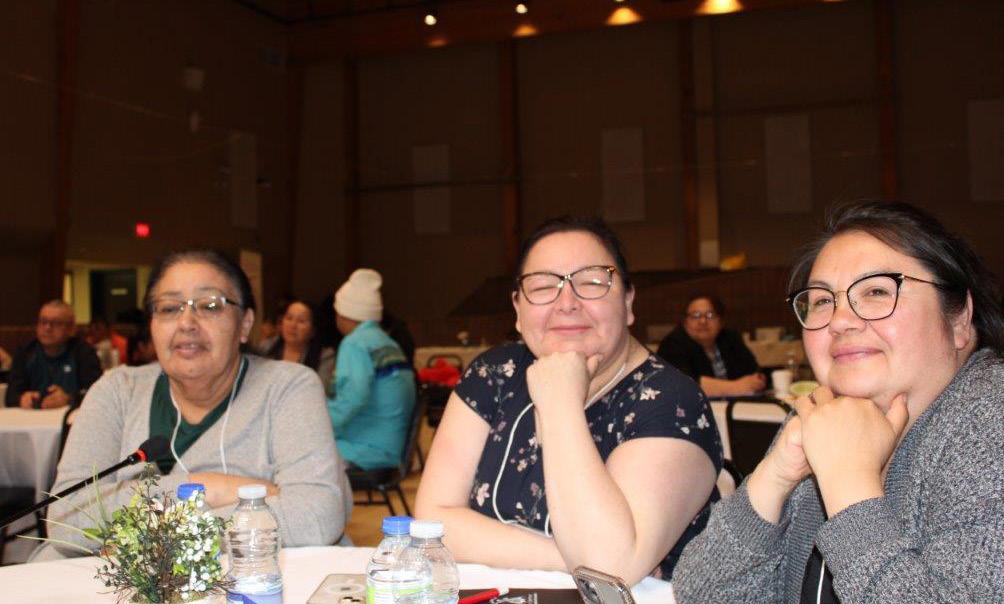
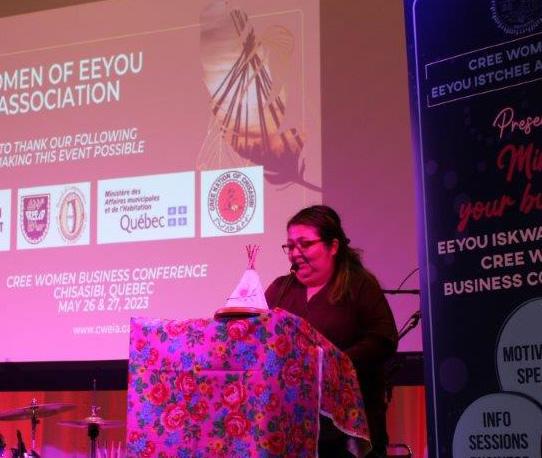
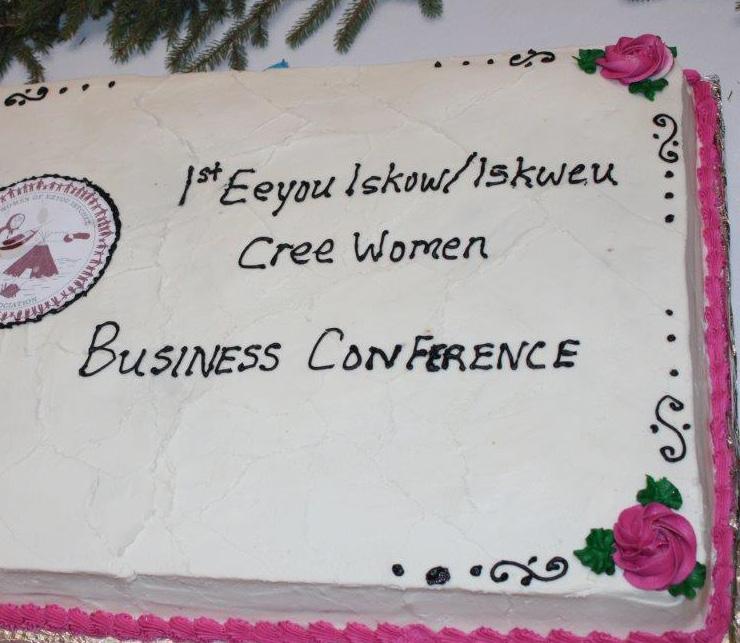
As many aspiring entrepreneurs at the conference start small, CWEIA is seeking contributions from companies and entities to finance microfunding grants for startups.
“Now with CWEIA being there to help out, they think they can start this,” Cooper explained. “We all walked away smiling. Our women are united when they get together. They’re strong and resilient and spring up even though it gets hard – like a palm tree in a storm we remain standing.”
“I felt there was a new sense of inspiration because no one has ever done a conference specifically for our women in business.”
-JulieAnn Cooper, CWEIA’s business development coordinator




“At Éléonore, we are aware that we are privileged to be welcomed on the territory of Eeyou Istchee. We will do everything possible to respect our engagements because we are guests on the land.”
 – David Gaudreau, General Director, Newmont Éléonore
– David Gaudreau, General Director, Newmont Éléonore
Newmont’s Éléonore mine is situated on the territory of Eeyou Istchee, more precisely on the trapline of the Mayappo family from the Cree Nation of Wemindji. Since the beginning of 2000, the family’s hospitality has been unlimited, and prospectors have freely walked the territory.

Late tallyman, Michael Mayappo, always opened his arms to non-Indigenous people wanting to learn about the Cree culture. Today, it’s his wife, Louisa Mayappo, who dedicates herself to teaching Eeyou traditions to the employees of Éléonore mine.
Every year since the the construction and development of the mine, Louisa and her family members have taken care of a cultural site at Éléonore. In this place, a teepee was built along with a mitukan, a mitutisaanikimikw and a shaapuhwaam.
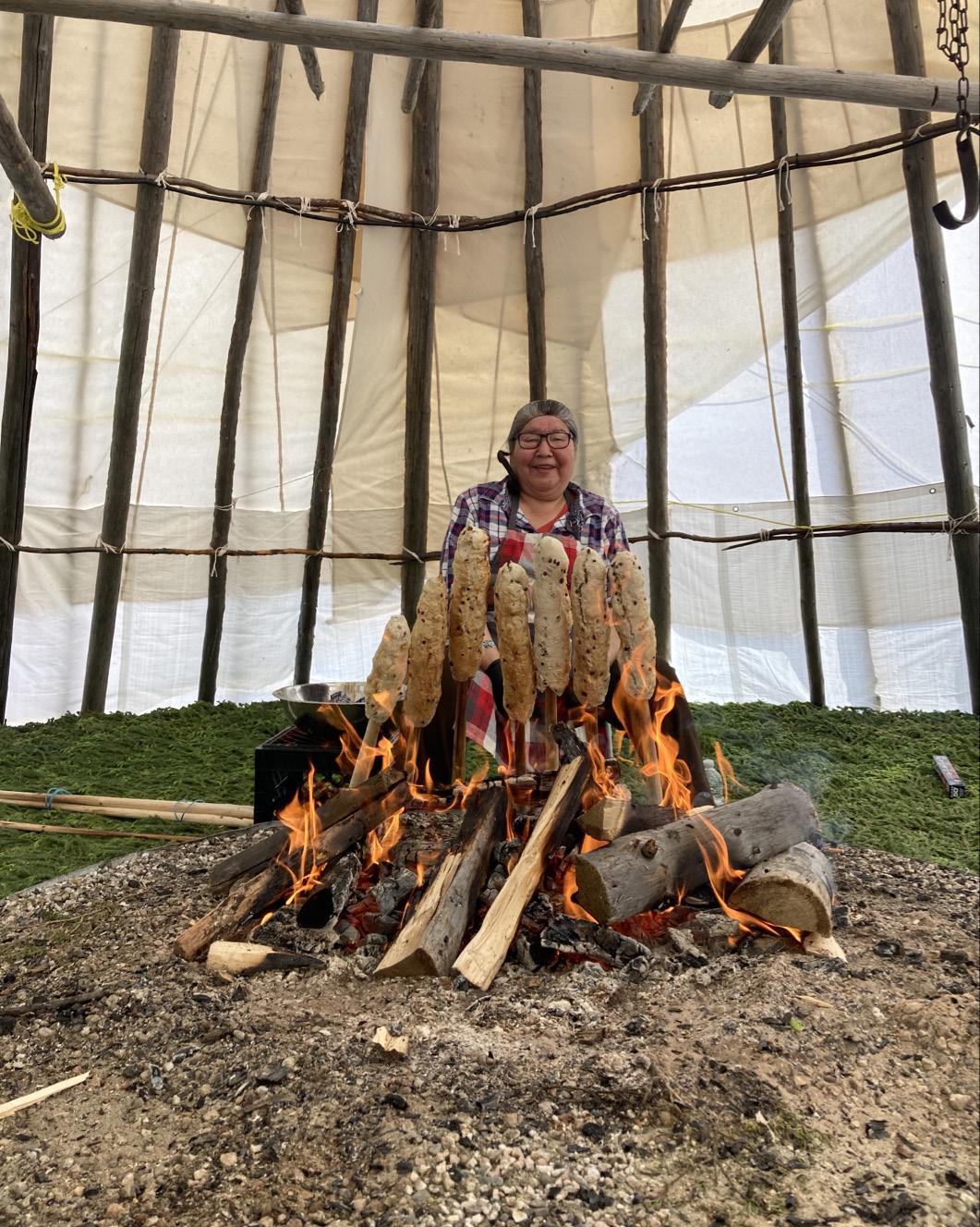
Many times a year, the family organizes various cultural activities. Elders and other families from the territory are invited to join us on the cultural site of the Éléonore mine to share their knowledge with the employees. The Eeyou Meechum is prepared on the site and served to employees, as well as moose, goose, walleye, and bear. Throughout the years, Louisa Mayappo and her son, tallyman Angus Mayappo, have taught us how to install snares, process a lynx, prepare a moose hide, etc.
Before the pandemic, we were able to invite the people of the Cree Nation of Wemindji to join us on multiple occasions. We celebrated Walking Out ceremonies, Snowshoe ceremonies, and had Arts and Crafts demonstrations. Also on National

Indigenous Peoples Day, many artists came to celebrate their arts with us, including fiddler David Ratt, young dancers from Wemindji, singers and guitar players Claude Mckenzie and Christopher Herodier, as well as comedians James Jonah and Emily Cowboy.
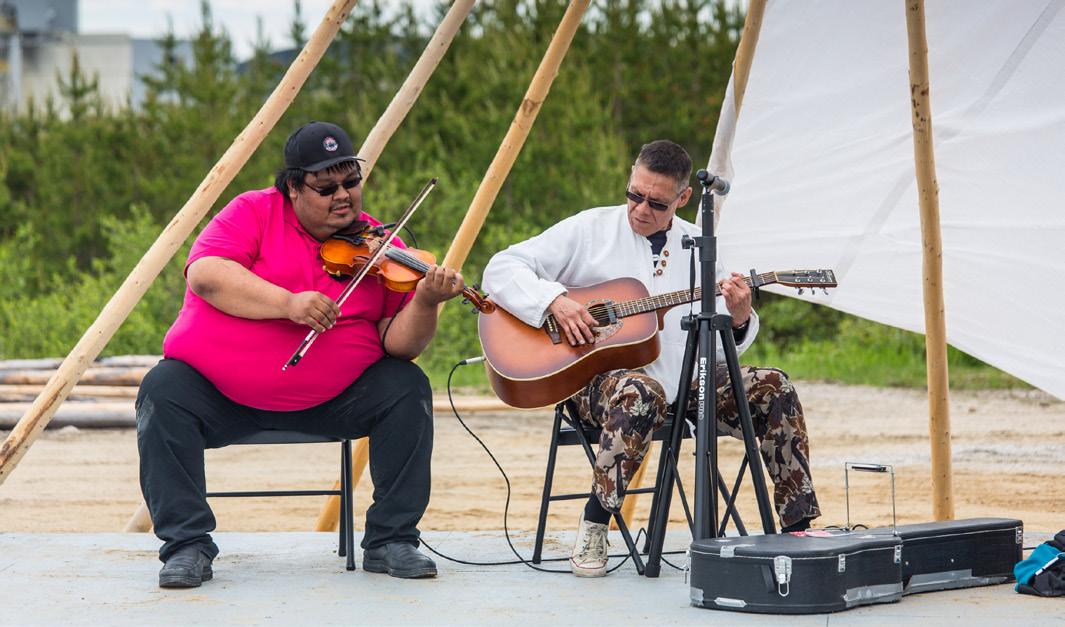
A mini pow-wow and an exposition from the Cree Cultural Institute Aanischaaukamikw were also organized. This year we certainly want to repeat the experience with fiddlers and dancers!
A project that we have at heart is to teach the Cree language to the mine’s employees. We are working on a project with Beesum Communications for Cree translations, we ran a survey with the mine’s employees to learn which expressions they would like to learn to better communicate with their colleagues. So, all year long, words and expressions will be running on TVs on the site.
Since 2021, with the support of our Cree partners and Université du Québec en Abitibi-Témiscamingue, we created a specific workshop for Éléonore’s employees on Cree culture and history. To date, 88% of our work force has received this 90-minute workshop.
Cree employees have noticed a change in the way non-Indigenous colleagues connect with them following this workshop, so we say; mission accomplished!
In 2022-2023, Indspire provided over $27.5 million through over 7,500 bursaries and scholarships to First Nations, Inuit, and Métis students across Turtle Island – the most in our history.
While the world endured unprecedented challenges, Indigenous students were still able to pursue their dreams and achieve their goals with help from our partners, donors and supporters.

There are many ways to say thank you, but there are even more possibilities for the future.
Visit indspire.ca to learn more.
Indspire @indspire.ca Indspire












As forest fires forced evacuations of southern Cree communities in early June, the Nation spoke with Cree Regional Economic Enterprises Company (CREECO) president Derrick Neeposh as he worked from his daughter’s apartment in Gatineau.
Most of the parent company’s subsidiaries were operating as usual, but Neeposh reported that Gestion ADC had to evacuate staff from its Osisko mine camp because of nearby fires. Overall, however, he said that CREECO’s prudent approach to long-term business growth means it isn’t stuck “putting out fires” in the workplace.
With a successful portfolio of companies in construction, air transportation, hotel, catering and other industries, CREECO is responsible for managing the Cree Nation’s economic investments. When a $15 million growth fund’s term recently expired, yielding over $120 million after 30 years, the Board of Compensation (BOC) determined it would be wisest to ensure continued wealth by locking in $50 million over the next 30 years.
“Our job is to ensure we’re protecting the capital, not panicking at a time of turmoil,” explained Neeposh. “If we took everything from the growth fund, the impacts in communities would be immediate but then we wouldn’t have that security. To be clear, the funds gained will belong to the shareholders as a whole.”
As the initial investment only stated the money was for future generations, confusion spread after the Cree Nation Youth Council had thought it was meant for them, prompting CREECO to swiftly deliver a letter of clarification. The investment’s remainder goes to “regular funds”, ensuring disbursements to communities exceed $500,000 for at least the next decade.
The BOC currently has over $200 million in investments under various accounts, from which market forces determine how much can be allocated to communities. Establishing a policy that leaves its growth fund untouched could see that investment grow by eight times over the next 30 years.
Keeping an eye on market trends has spurred recent adjustments at CREECO’s most famous investment – the $100 million Odea skyscraper in downtown Montreal. With the real estate market slowing down, a number of the planned condos will be instead converted into luxury apartments that will remain rental properties.
“Buyers are hesitating and we don’t have time to wait for conditions to improve,” Neeposh said. “We want to keep a good sales level – inflation and interest are big factors. It doesn’t change the ownership structure, where 95.5% still belongs to the Cree.”
The project, expected to be completed by summer 2024, is still on target and budget, Neeposh emphasized. As concrete is
poured for the upper floors, Anishinaabe architect Douglas Cardinal’s canoe-inspired design is taking shape and the building’s structure should be finished by the end of June.

The Odea project’s prominence is on the radar of other First Nations across Canada, sparking invitations to collaborate in emerging opportunities. There’s even a documentary in the preliminary stages about successful collaborations between Indigenous and non-Indigenous companies that will include CREECO’s partnership with Cogir Real Estate.
However, Neeposh said CREECO is maintaining a slow and steady approach to growth and will focus on finishing the Odea project before moving on to another. This strategy extends to its subsidiaries like Cree Construction, whose new president Danny Pash is currently assessing operational issues, connecting with existing clients and considering opportunities beyond Eeyou Istchee.
“We’re letting Danny take the wheel,” said Neeposh. “He’s on the right track for realigning goals for the company and has been well received by existing and new clients. A priority is completing construction of the two major schools in Chisasibi before the school year starts.”
Air Creebec is also entering a transition stage with the announcement of president Marcel Happyjack’s impending retirement. Although passenger loads have decreased, its core of charter con-

tracts with mining companies and the Cree health and school boards remains strong.
Aircraft ground services company Valpiro is eyeing expansion opportunities in Chibougamau and Timmins while ADC is in discussions with First Nations in Northern Ontario. ADC is working with the Quality Inn in Val-d’Or, of which CREECO attained full ownership in 2020, sharing its expertise in human resources to improve operational efficiency.
In late May, the Quality Inn was recognized with the prestigious gold award designation from Choice Hotels Canada for its 11th consecutive year. Neeposh and the hotel’s general manager Alexandre Audet held a small ceremony, thanking the staff for their excellent service.
“Winning the award demonstrates our ability of continuing that success,” said Neeposh. “We always keep in mind that it’s through their hard work that we achieve success. It’s not always about making money but creating reputation for our companies.”
Although there are currently no Crees in the hotel’s management team, Neeposh is hopeful more youth will pursue hospitality studies to explore the burgeoning careers in this industry. At the Cree School Board’s recent Post-secondary Student Services Conference in Ottawa, Neeposh promoted the growing employment opportunities available with CREECO companies.
“For a lot of students who study in the south, it’s not a priority to return to their communities because of housing and employment,” Neeposh asserted. “When they become educated they end up leaving their communities and families. We want to reverse that.”
CREECO is looking to expand its internship program, which previously helped marketing and engineering students gain hands-on experience. Neeposh believes this outreach could extend to all fields of study, such as having psychology grads improve employee relations or music students – like his daughter Valerie – create corporate videos.
“Our Cree students are so talented,” said Neeposh. “We’ll find ways to work with them, even if it’s through summer employment or during their studies. We’re flexible in providing those opportunities because that is the workforce that will benefit every company under Creeco.”

On National Indigenous Peoples Day, and everyday, we celebrate and honour First Nations, Metis and Inuit peoples achievements, contributions and vibrant culture.


www.fnbc.ca






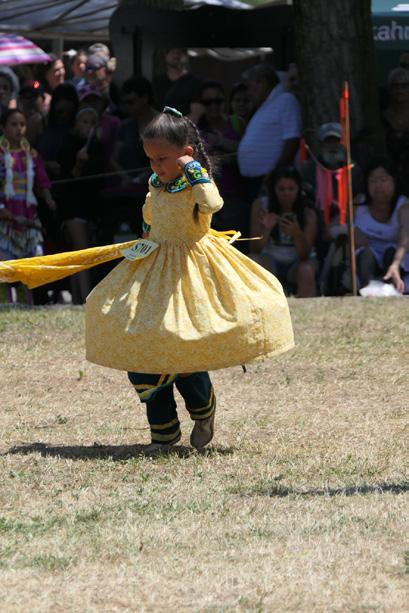











Kanesatake residents are increasingly unnerved by an environmental crisis in the Mohawk community west of Montreal. During a May 25 demonstration in front of Minister of Crown-Indigenous Relations Marc Miller’s Montreal office, they called for an independent inquiry into an illegal toxic waste dump that continues to operate despite losing its license two years ago.
A mock game of table tennis at the protest echoed the ceaseless back-and-forth between the federal government and the province, a ping-pong game that has held Kanesatake hostage. The symbolism is an assertion that the lives of Kanesatake’s inhabitants are tossed about.
NDP MP Alexandre Boulerice demanded a parliamentary commission to probe the toxic discharges. Wielding a jar of grey, opaque water from the site, Boulerice was resolute.

“No one should endure the torment of an environment poisoned by an illegal dump,” said the MP for Rosemont–La Petite Patrie. “Kanesatake’s inhabitants have been denied the basic right to breathe untainted air.”
The protesters’ spokesperson, known only as “Blue” and masked for fear of retribution in Kanesatake, questioned the government’s sincerity in addressing the longstanding woes of Kanesatake. Some in the community allege that the owners of the G&R Recycling site engage in intimidating tactics against those with environmental concerns.
Blue said that the Kanesatake Band Council is impotent in the face of alleged threats. “The regulations meant to safeguard the community have become whispers in the wind, rendered powerless by the fear of retribution,” said Blue. “Kanesatake stands vulnerable in the
face of a crisis that haunts their waking moments.”
For residents, the G&R Recycling site, stripped of its operating license in 2021, stands as a monument to negligence and indifference. La Presse recently described the contaminated water leaking from the site as a toxic river, leaving a lasting impact on the community.
The masked protesters, armed with cardboard cutout guns, created a cacophony of simulated gunfire to symbolize a culture of lawlessness in Kanesatake. The echoes of gunshots serve as a painful reminder of the deep-rooted tensions that have plagued Kanesatake since the 1990 Oka Crisis.
Now, in the face of environmental contamination, the battle for Kanesatake’s soul has taken on a new dimension, intertwining the fight for land and sovereignty with the struggle for clean air and water.
June 21 is National Indigenous Peoples Day. This is a day for all Canadians to recognize and celebrate the unique heritage, diverse cultures and outstanding contributions of First Nations, Inuit and Métis peoples.
Since time immemorial our Cree people have depended on the essence of nature’s resources for all their needs, and in return nature provided for their healing needs but we have forgotten what nature had given us for our healing.

Chief Essential Oils preserves, promotes, and enhances ancient natural remedies by merging Cree historical and traditional use of nature with science and modern technology.
With strict traditional harvesting care, and through a steam distillation process every essential oil produced is chemically tested to guarantee a high quality - 100% pure, natural, therapeutic grade essential oils!
Experience black spruce, balsam fir, cedar, jack pine, tamarack essential oils at their best!
For close to 30 years, we are proud that the Nation has provided a voice to the Cree of Eeyou Istchee.

We guarantee Chief Essential Oils are naturally resourced and authentically produced by Cree people of Mistissini, Quebec, Canada.
Enjoy!
www.chiefessentialoils.com
kenny@chiefessentialsoils.com
kblacksmith1@gmail.com
418 770-1798
On June 21st, our whole team extends their best wishes for everyone to have a wonderful day of celebration with friends and family.





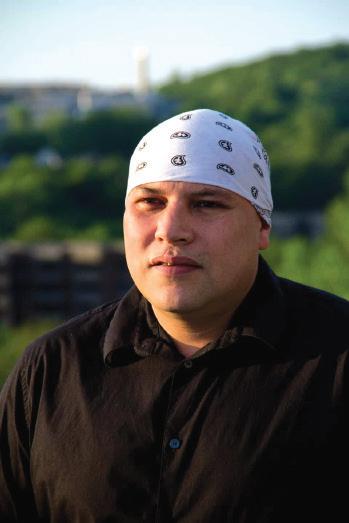



Here’s another edition of the Nation’s puzzle page. Try your hand at Sudoku or Str8ts or our Crossword, or better yet, solve all three and send us a photo!* As always, the answers from last issue are here for you to check your work. Happy hunting.
Previous
59 8635 5
How to beat Str8ts –Like Sudoku, no single number can repeat in any row or column. But... rows and columns are divided by black squares into compartments. These need to be filled in with numbers that complete a ‘straight’. A straight is a set of numbers with no gaps but can be in any order, eg [4,2,3,5]. Clues in black cells remove that number as an option in that row and column, and are not part of any straight. Glance at the solution to see how ‘straights’ are formed.

To complete Sudoku, fill the board by entering numbers 1 to 9 such that each row, column and 3x3 box contains every number uniquely.
For many strategies, hints and tips, visit www.sudokuwiki.org
If you like Str8ts check out our books, iPhone/iPad Apps and much more on our store. The solutions will be published here in the next issue.

As I so wrongly predicted that this summer would be a cold one and there would be no real chance for forest fires, I digress. Yes, believe it or not, I was wrong. As someone who knows the weather and its usual patterns, this summer caught me off guard.
It really is an upside-down type of year. It started with extreme cold, then there was no real snow to melt. Followed by a funny spring when everyone was fooled by the crazy flight patterns of the spring geese. Then the ice disappeared, just like that. Now we’ve got instant forest fires that pop from dry electrical storms. Yep, I got it all wrong this year.
Now, in mid-June, forest fires are everywhere in my usual southern travel zone. Coming from a community with no road access, it’s hard to turn around and head back home without regular air service, as we can only fly out three times a week to enter the rest of our territory. Heck, bingo is on more times than that.
On another note, you might have noticed that the price of food has skyrocketed to the point where fitness gurus are complaining that a healthy diet is now only available to those with steady incomes. Reliable employers are increasingly looking into not having their workat-home staff show up at the office. Heck, let those workers stay home and relax in their jammies while the boss works like an idiot on steroids just to keep the business alive.
Some days, it’s not worth the effort showing up as you know no one will be there to buy you a coffee or to have lunch with at a nearby restaurant. Nope, it’s about not working and still getting paid, for me at least. In the end, the business owner has to pay the price and lay off those workers who do show up because it’s just not fair to them. Why should they work when the person stays at home and still gets paid.
As I grow older, somewhat wiser and definitely crankier, I wonder if the days of the past were actually good. I think of how we used to slave away for those who had no interest in our future, but only for their bottom line and profit margin. For school, I think there was a quota to be fulfilled, so many students will increase your budget for the year. But no, budgets were mainly to keep those schools operational, like the heating, utilities and maintenance, with no real concern for the students who were there to give the institution a purpose based on quotas.
Don’t mind my rant as I could go on about misfortunes and bad-luck scenarios that plague our modern-day workforce – or should I say, the Jammie Workforce, which you have to force to work.


I can see how things were built in the past, usually with people who had no choice but to slave away using a shovel and pickaxe to make that smooth road you drive on every day to work, cursing the potholes that dot the roadways. Sorry modern-day driver, no one could get out of bed and their home long enough to fix that nasty crater on your way to work.
Today, we manage our own schools with more young ones enrolling and learning about the future. Today, the past is something we don’t want to happen again, but those memories, good and bad, keep on resurfacing. I prefer to remember only the good memories and lock the bad ones away somewhere deep in my psyche, only to be brought out when the time is needed to scratch at those old scars and cause deep internal bleeding of the heart and soul. Like many others my age, it’s best to keep the future bright enough for the next generations to see their own pathways and take them without fear of stumbling and falling into a world that is not ours.
Today, we stand for the future and the present is our new stomping ground where we can go freely without being forced – a future without guilt and pain. Tomorrow is always a new day for today’s generation.

I wonder if the days of the past were actually good
Our Nation keeps growing, so does the need for housing! In 2020 the Cree Nation Government approved the Community Private Housing Initiative.

• Be a JBNQA beneficiary
• Be 18+
• No arrears
• Be pre-approved for a mortgage
• Support from local Cree Government
• New housing unit(s)
• Must be used as a main residence
• Either detached or semi-detached

• Row houses or independent units that form part of a multi-unit complex
We are also working on developing media content that will provide details about the program and other housing topics.
OVERVIEW OF CPHI
A short video that will introduce you to Community Private Housing Initiative.
ELIGIBILITY CRITERIA TO CPHI
Have you wondered how you can be eligible for the CPHI? This video will provide you with a more detailed explanation.
WHAT IS A MORTGAGE?
A mortgage might sound complicated but with this video you will understand what a mortgage is and some common terms mean.
Scan the QR code to find who to talk to in your community.
CPHI AWARENESS
POSTER
A poster that will provide a brief overview of the CPHI. but will also provide a link to the site.
CPHI PAMPHLET
A pamphlet that will contain all of the information that you will need in order to start the process to owning your own home.
All of the material to be made available on multiple social media platforms!


- Elected officials Chiefs/Grand Chiefs, Vice-Chiefs and board presidents: Next cohort: November 16, 2023
Councillor/Chiefs and board administrators: Next cohort: December 7, 2023

- Entrepreneurs Next cohort: November 22, 2023
- Managers Next cohort: November 29, 2023
- Women and leadership Next cohort: October 30, 2023
*Places are limited
TO FIND-OUT MORE AND SUBMIT YOUR APPLICATION GO TO: FOLLOW US
fnee.ca/programs



He wanted to make new friends
OThe Trois-Rivières police dismissed his wife’s concerns and told her for months that he had probably ran away after drinking too much. However, Eduardo was not a heavy drinker and was a loving husband and father to his four-year old son.
Eduardo’s family and friends were left with little support from the police and looked for him for six months, in vain. On May 3, coast guards found Eduardo’s body floating in the St. Lawrence River near Quebec City.
Security footage from Le Zénob show that before leaving the bar Eduardo got into an altercation in which he was called racial slurs and was physically assaulted by a group of people. From Peru and visibly Indigenous, he was the kind of person who stood out in a place like Trois-Rivières.
Footage also showed a seemingly disoriented Eduardo, even though his friends reported he was fine moments before. Even after viewing the footage, TroisRivières police still refused to investigate
n November 26, 2022, Eduardo Malpica Ramos, then 44 years old, attended a corporate event at Bar le Zénob in Trois-Rivières before vanishing into the night.a possible hate crime. But Eduardo’s family was his whole world.
Our communities are very familiar with the police’s go-to explanation when we find our missing peers in bodies of water. “They were drunk so they went in the water,” they always say, even when it’s -40º outside.
We saw similar discourse from the Sûreté du Québec (SQ) in Val-d’Or, even after their “starlight tours” practice was exposed in media and inquiries. We also see similar discourse expressed by the Thunder Bay police in Ryan McMahon’s docu-series Thunder Bay, a city with the highest rate of reported hate crimes in the entire country.
The alcohol factor is something that is often used to discredit and dehumanize Black, Indigenous and other people of colour, even in our death. But again, Eduardo was not a heavy drinker. Plus, he was afraid of water, because he couldn’t swim.
Katherena Vermette, a Métis author whose brother was found deceased (in the same river where Tina Fontaine’s small body was found) after he went missing in the North End in Winnipeg, writes in “indians”, a poem from her book North End Love Songs:


indians drown the family finds out happens everyday this land floods with dead indians this river swells freezes breaks open cold arms of ice welcome indians
This poem has haunted me for years, even more so these past few days as I think of Eduardo and his family. His name will live in my advocacy against white supremacy and oppressive systems that rob us of our dignity. I hope his name lives in your mind as well, because Eduardo’s story is also the story of our Native kin who get pulled out of rivers and landfills and who never get justice every year in this country.
A lot of people are questioning the fact that Eduardo stayed behind after his last friend left the bar. He had recently moved to Trois-Rivières from Montreal with his family. His wife Chloé said that before he disappeared, he had been talking about wanting to make friends in his new town, because he was missing the social life he had in Montreal. Let that sink in.
DATE
June 27th-29th, 2023
Special event the evening of June 28th; Business Exchange in collaboration with Secretariat Abitibi-Temiscamingue.
LOCATION
Winnie Trapper
Coordinator of Housing Conference 2023 (418) 770-4057
housing.agent@mistissini.ca
Bert Hester
Coordinator of Housing
Cree Nation Government (819) 895-4171

bert.hester@cngov.ca
Scan
QR Code
Lawrence P. Katapatuk
Regional Housing Planner

Cree Nation Government (819) 856-5234
housingplanner@cngov.ca
